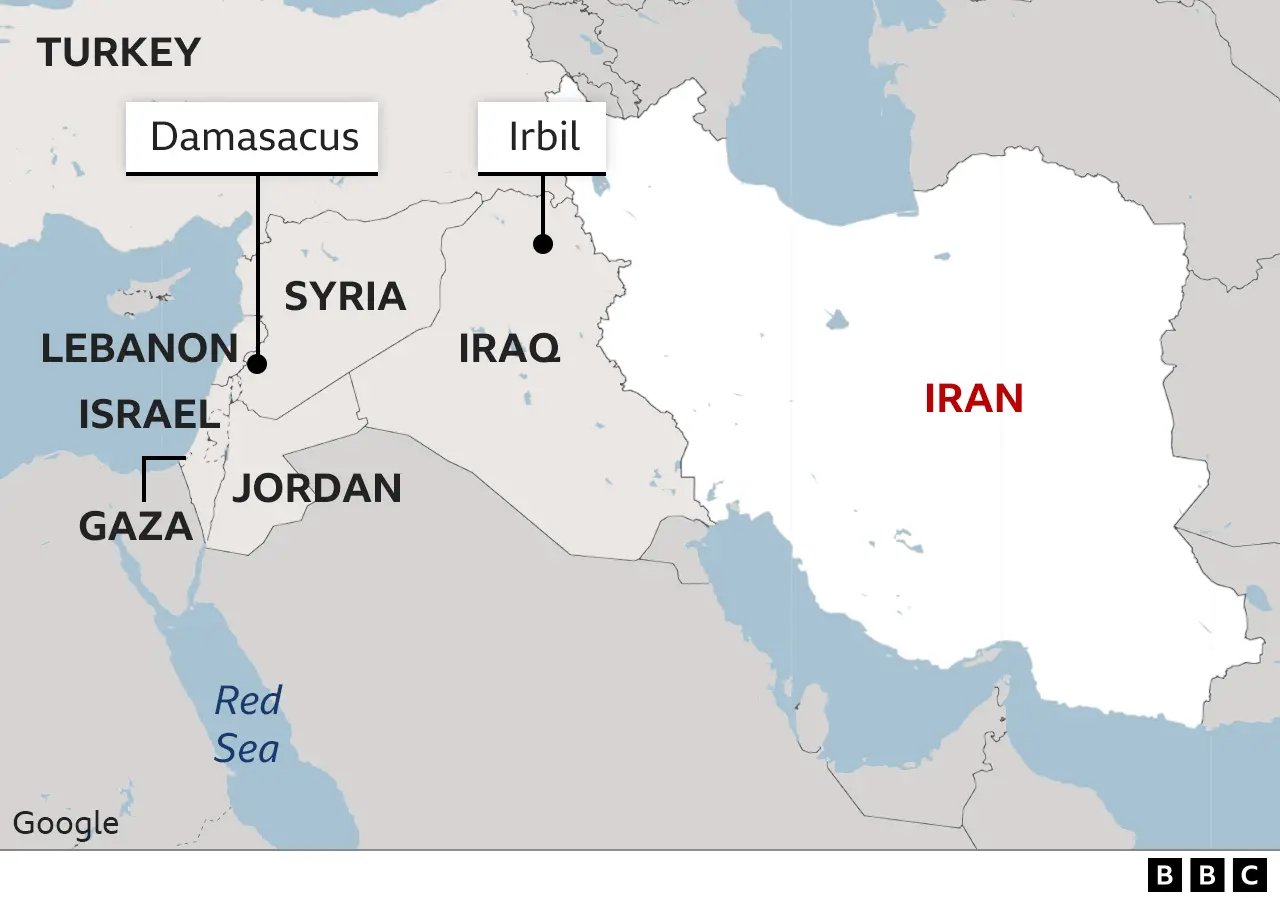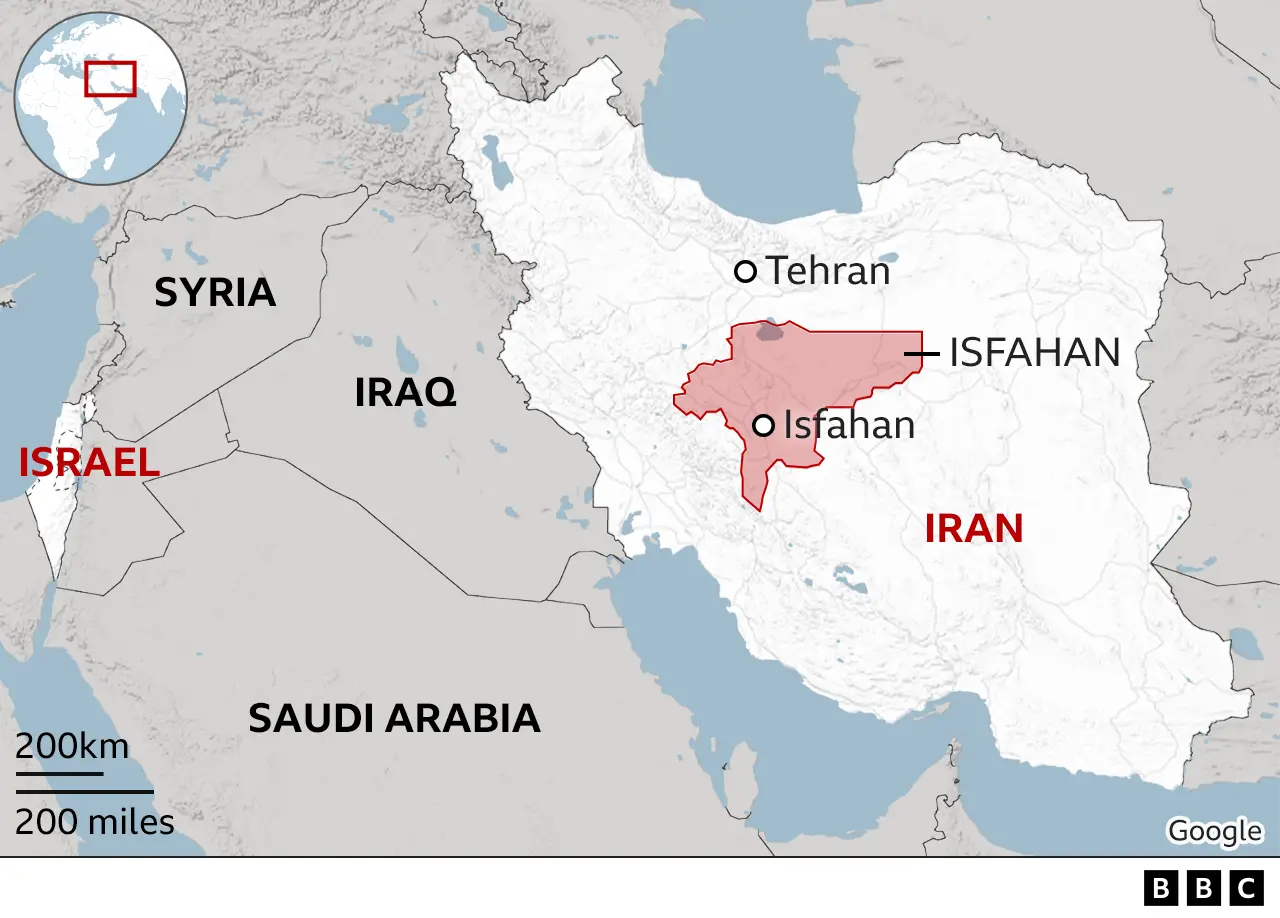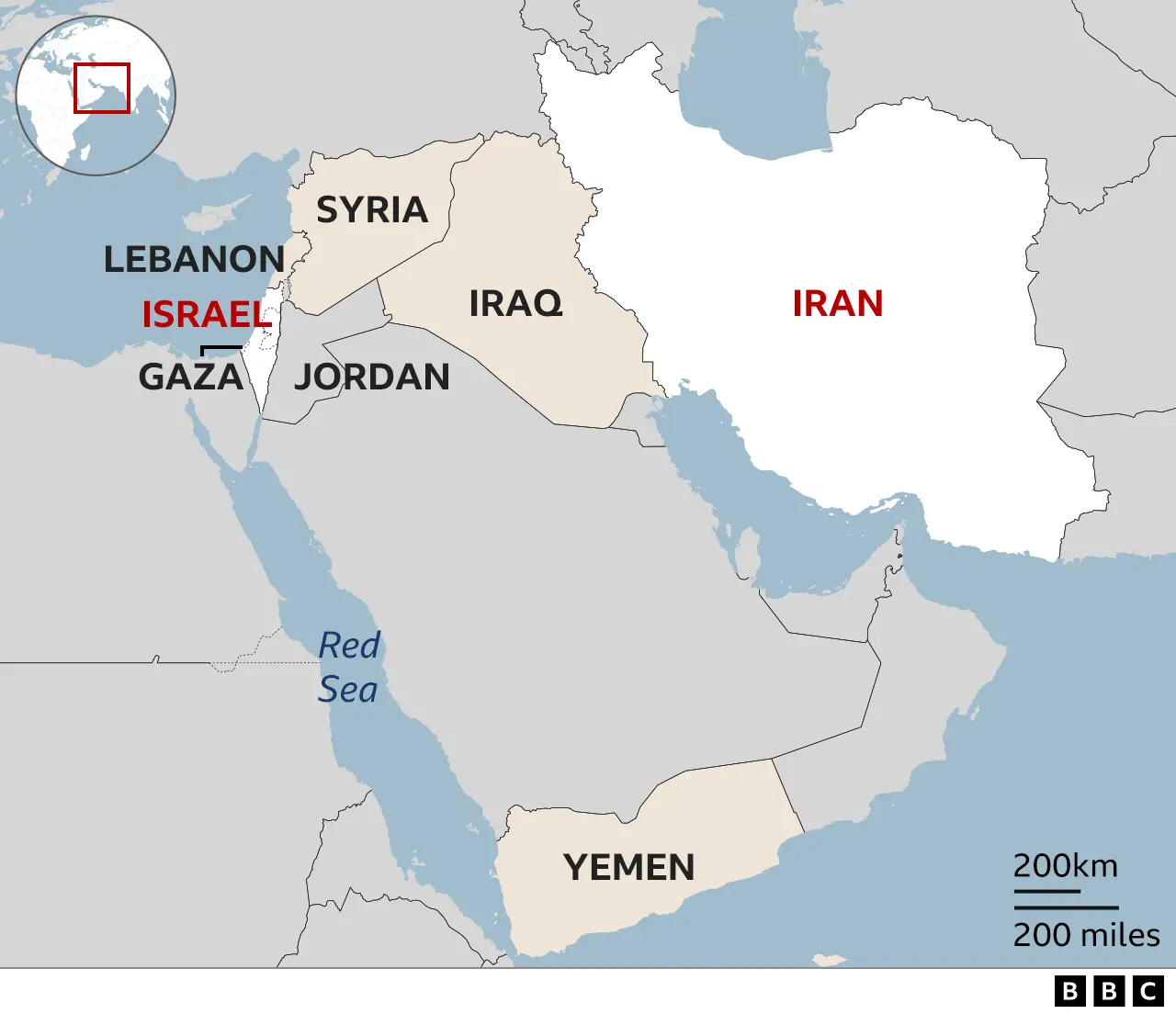The Distance Between Israel And Iran - A Straight Look
When we talk about how far apart two places are, especially countries that often grab headlines, it's pretty natural to wonder about the actual space between them. For Israel and Iran, this isn't just a simple line on a map; it's a topic that, you know, comes up a lot. What's the real distance, if you were, say, a bird flying straight from one to the other? Well, it turns out the shortest air travel path, like a bird might take, measures around 1,789 kilometers, or about 1,112 miles. That's a good chunk of space, to be honest.
Figuring out these kinds of distances can feel a bit like a puzzle, especially when you consider different ways to measure. Are we talking about a straight shot, or do roads and borders get in the way? For the air distance, it's literally a direct line, which is pretty much the most straightforward way to look at it. This direct measurement, without considering any turns or detours, gives us a very clear picture of just how much ground, or rather air, separates these two nations. It’s, like, a fundamental piece of information for anything else you might want to think about regarding them.
So, we're going to take a closer look at what "My text" tells us about this space. We'll explore the various ways this distance gets measured, what it means for getting from one spot to another, and how, you know, maps can help us visualize it. We'll also touch on what the travel time might look like if you were to fly, and even some of the more practical bits, like figuring out how much it might cost or how long a trip could take. It’s all about getting a clearer picture of the actual physical gap between these two places.
- Marta Sales Sales Age
- Who Is Armstrong Williams Wife
- Jason Weaver Wife
- Was Usain Bolt Born With That Name
- Beau Marie St Clair
Table of Contents
- How Far is The Distance Between Israel and Iran by Air?
- What Does The Distance Between Israel and Iran Mean for Travel Time?
- Visualizing The Distance Between Israel and Iran on a Map
- How Do We Calculate The Distance Between Israel and Iran?
- Are There Different Measurements for The Distance Between Israel and Iran?
- What About the Cheapest or Quickest Way to Cover The Distance Between Israel and Iran?
- What Does The Distance Between Israel and Iran Imply for Actual Travel?
How Far is The Distance Between Israel and Iran by Air?
When we talk about the air travel shortest distance, sometimes called "bird fly," between Israel and Iran, we're looking at a measurement that cuts straight through the air. This measurement, according to the information, is about 1,789 kilometers, which is roughly 1,112 miles. This is the most direct path, you know, without any turns or going around things. It's just a simple, straight line from one spot to the other. This kind of measurement is pretty standard for getting a quick idea of how far apart two places truly are when nothing is in the way. It gives us a very baseline figure, a kind of foundational number for thinking about the space that separates them. It’s, basically, the shortest possible route if you could just fly over everything.
It's interesting to note that this "as the crow flies" measurement doesn't take into account any of the real-world stuff, like borders or special airspaces. It’s just about the pure physical separation. For instance, the text mentions that the direct distance between Tehran, which is the capital city of Iran, and Jerusalem, which is the capital city of Israel, is around 1,100 miles, or about 1,770 kilometers. This is, you know, also measured as that straight line. So, while the overall country-to-country air distance is one figure, the distance between specific major cities within those countries can be a little different, but still measured in the same straight-line fashion. This difference, really, just shows that specific points within countries can have their own unique distances, even if the general country-to-country figure is close.
What Does The Distance Between Israel and Iran Mean for Travel Time?
So, if you were to consider flying, say, with an airplane that typically moves at an average speed of about 560 miles per hour, getting from Israel to Iran wouldn't take a whole day. According to the data, a trip like that would last about 1.99 hours. That’s less than two hours in the air, which, you know, is pretty quick when you think about the actual distance involved. This kind of calculation helps put the distance into a more relatable perspective, showing how long it might take to cover that ground if you were, actually, flying. It gives a sense of the practical side of this separation.
- Ben Pasternak Age
- Does Aoc Have A Life Partner
- Hannah Palmer Husband
- Sophie Rain Reddit Nsfw
- The Mole Hannah And Tony
And if we look at a slightly different route, specifically from Iran to Jerusalem, the capital of Israel, the travel time is very similar. With an average airplane speed of 560 miles per hour, that trip would take around 1.93 hours to arrive. This slight difference in time, you know, reflects the specific points of origin and destination within the countries, but the overall picture is one of relatively fast air travel for the distance. It’s a good illustration of how air travel, basically, shrinks the world, making what seems like a considerable distance feel much closer in terms of the time it takes to cross. It also shows that the travel time is pretty consistent whether you're starting from Israel or Iran, given the similar distances involved between their major cities.
Visualizing The Distance Between Israel and Iran on a Map
When you're trying to get a real feel for how far apart places are, seeing it on a map can be, well, really helpful. The information tells us that there are ways to see the distance in kilometers between Iran and Israel and even view the route on an interactive map. This kind of tool is great for planning any sort of trip, or just, you know, satisfying your curiosity about geography. It allows you to get a visual sense of the path, whether it’s a straight line for air travel or a more winding road map if you were thinking about driving. It makes the numbers feel more real, which is pretty cool.
There are also worldwide distance calculators out there that can help with this. These tools often provide not just the air line distance but also route planners, travel duration estimates, and flight distances. So, you can figure out how far it is from Iran to Israel, or vice versa, in both miles and kilometers, and even get a sense of the flight time, all for free, and with a map to go along with it. This kind of resource is very handy for anyone wanting to understand the spatial relationship between these places in a practical way. It’s, essentially, a way to bring the abstract numbers into a visual context, making it easier to grasp the actual physical separation.
Getting a Sense of The Distance Between Israel and Iran with Coordinates
To really pinpoint places on a map, we often use something called longitude and latitude. These are like a unique address for any spot on Earth. For Iran, the text tells us it’s located at a longitude of 51.417655 and a latitude of 35.657655. And for Israel, its coordinates are a longitude of 35.207655 and a latitude of 31.767655. These numbers, you know, help us precisely locate these countries on a global scale. It’s how maps and distance calculators figure out those straight-line measurements we talked about earlier. They use these exact points to draw the shortest path, which is pretty neat.
Knowing these specific geographical markers helps in figuring out the total distance between the two. For instance, the total distance between Israel and Iran is stated as 1558 kilometers and 593.2 meters, which is about 968.5 miles. This figure, you know, seems to be a consistent measurement given in a few places within the text, indicating a standard calculation for the overall separation. It’s a bit more precise than just saying "around a thousand miles" because it gives you the exact kilometers and even meters. This level of detail is, basically, what allows for accurate mapping and travel planning, helping to define the space that exists between these two areas.
How Do We Calculate The Distance Between Israel and Iran?
Figuring out the distance between two spots on the globe usually involves some fairly straightforward math, especially for "as the crow flies" measurements. It's not about roads or borders, just the direct line. The information mentions that you can calculate the distance between Iran and Israel in miles and kilometers, and you can even do it for free, often with a map and flight time included. This suggests that the calculations are, you know, pretty accessible and not some sort of secret formula. It's about using those geographical coordinates we mentioned earlier to draw a straight line and measure its length on the Earth's surface. It’s, essentially, what a lot of online tools do for you.
For specific cities, like Tehran in Iran and Tel Aviv in Israel, the distance is noted as 1585 kilometers, which is about 985 miles. This shows that while we have a general country-to-country distance, the distance between particular urban centers can vary a little bit. The text also brings up calculating driving distance and travel time for roads, which is a whole different kind of measurement. That’s where things like actual road networks and, you know, geographical features come into play, making the route much longer than a straight line. So, the method of calculation really depends on whether you're looking for a direct air path or a real-world travel route, which is an important distinction to make.
Are There Different Measurements for The Distance Between Israel and Iran?
It's interesting how different sources can give slightly varied numbers for the same distance, isn't it? The information provides a few figures for the distance between Israel and Iran. We've seen the 1,789 km (1,112 miles) for air travel. But then, it also states that the total distance between Israel and Iran is 1558 km and 593.2 meters, which is 968.5 miles. This 1558 km figure appears a few times, suggesting it’s a fairly consistent measurement for the overall separation. There's also a mention that the shortest distance between Iran and Israel is about 1,000 km, or 620 miles, and that Israel is over 920 km at its shortest from Iran. These slight differences could come from measuring between different specific points within each country, or, you know, using slightly different calculation methods. It’s not a huge difference, but it’s there.
For instance, the air travel shortest distance between Iran and Jerusalem is given as 1,743 km, or 1,083 miles. This is a specific measurement between a capital city in Israel and the country of Iran generally. Then, the distance between Tehran and Jerusalem is noted as 1559 kilometers, or 968 miles. These numbers, you know, highlight that the exact measurement can depend on which city or specific point you're using as your reference within each country. It’s like measuring from your house to a friend’s house versus measuring from one side of a city to another. The general area might be the same, but the precise points change the number a little. So, while there's a general range, the exact figure can shift based on the specific locations being considered, which is, basically, how geography works.
What About the Cheapest or Quickest Way to Cover The Distance Between Israel and Iran?
When you're thinking about actual travel, beyond just the straight-line distance, practical things like cost and how long it takes really come into play. The text mentions that the cheapest way to get from Israel to Iran could cost only $379. And, you know, the quickest way might take just 8 hours. These figures are, presumably, for real-world travel that involves more than just a direct flight, perhaps including layovers, different routes, or other forms of transport. This is very different from the less than two-hour direct flight we discussed earlier, which is just about the time spent in the air. It shows that real-world travel is a whole different ballgame compared to theoretical straight-line measurements. It’s, basically, about finding a travel option that fits what you need, whether it’s saving money or saving time.
Finding the travel option that best suits you means considering all these different factors. A flight that takes 8 hours might involve multiple stops or a longer route to get a better price, or it might be the fastest available option if direct flights aren't, you know, an everyday thing. The information also brings up road maps and driving distances, which would certainly take much longer than any flight. So, while the air distance is a fixed number, the actual journey time and cost are very flexible and depend on how you choose to make the trip. It’s a good reminder that numbers on a map are just one part of the story when it comes to getting from one place to another, and that practical considerations often add to the actual time and effort involved.
What Does The Distance Between Israel and Iran Imply for Actual Travel?
Thinking about the physical space between Israel and Iran, it's clear that while the air distance is a specific number, real-world travel involves much more. The text points out that a direct, straight-line flight doesn't consider any geopolitical restrictions or airspace considerations. This is a pretty big detail, you know, because countries have their own airspaces, and crossing them isn't always straightforward. It means that while a bird might fly directly, an airplane often can't, or at least, not without careful planning and permission. This distinction is, essentially, what makes the difference between a theoretical distance and a practical travel route.
The information also raises a thought-provoking point about how a war between them might look, asking where it would be fought, since neither can actually reach the other without crossing, and therefore involving, either Iraq, Jordan, or Syria. This highlights that the physical distance, combined with the geographical layout of the region, means that any movement between these two countries, whether for travel or other reasons, would inherently involve other nations. It’s a reminder that geographical facts, like the distance and the countries in between, have a real impact on how things play out in the world. So, the distance isn't just a number; it's a factor in how things actually work on the ground, or, you know, in the air.
- Azadi Tower
- Guerdy Abraira Net Worth
- Harry Connick Jr
- Kenny Loggins Siblings
- Was Usain Bolt Born With That Name

Understanding a week of missile strikes across Middle East

Israeli missile hits Iran, US officials say, as blasts heard

What was in wave of Iranian attacks and how were they thwarted?